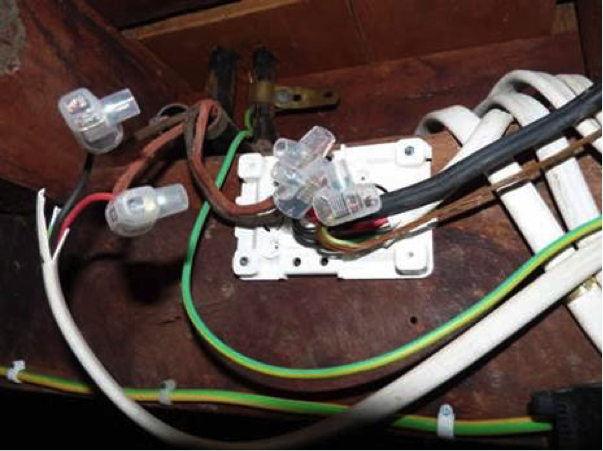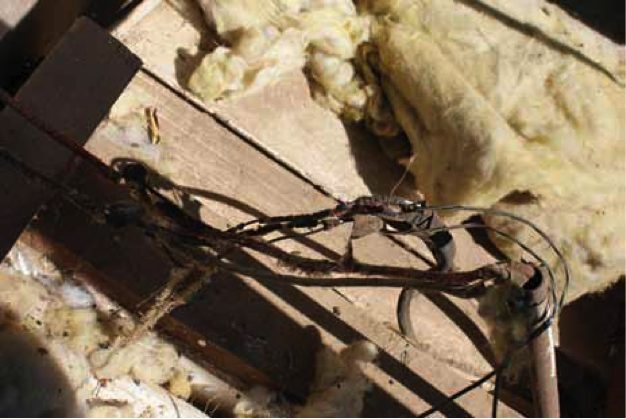Watch out for deteriorated wiring or cracked and brittle Bakelite fittings in older electrical installations
Electrical installations wired prior to 1960 have a greater risk of failure as the equipment is coming to the end of its service life. These installations are likely to contain cable insulation known as VIR (vulcanised Indian rubber) or TRS (tough rubber sheathed). VIR and TRS cable insulation may have deteriorated to the point of exposing live conductors.
Another safety risk is aging Bakelite fittings such as light fittings, functions boxes and power points. These fixtures can become brittle and be easily damaged resulting in exposed live parts.
Take extra care when accessing roof spaces or performing repairs or renovations in older homes. Make sure the electrical supply is isolated before you enter the roof space. Isolation is also a good risk control for renovations involving wall alterations which may have live electrical cables in them.
When VIR/ TRS cable or damaged Bakelite fittings are detected, the homeowner, business owner or the owner of the installation should be told about the risks and how to eliminate them. It’s likely that the wiring systems or Bakelite fittings will need to be replaced.
If you employ licensed electricians, make sure they can identify these types of older wiring systems before work gets underway.

Photograph 1: VIR cable can be seen exiting the metal conduit.

Photograph 2: Deteriorated rubber insulation exposing live conductors.
Image courtesy of Department of Mines, Industry Regulation and Safety, WA.